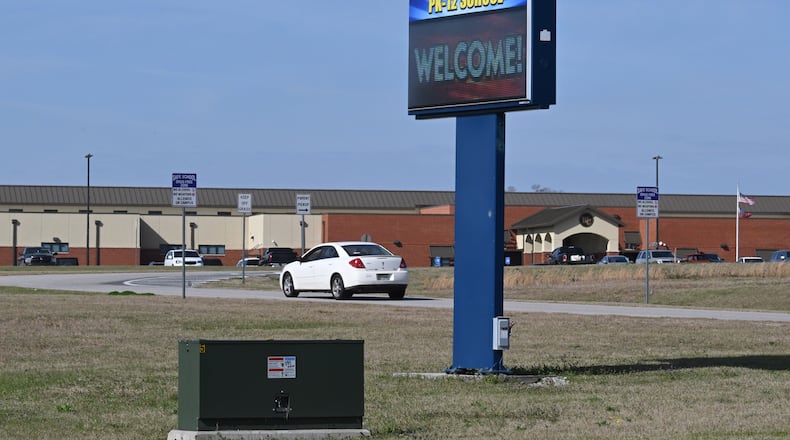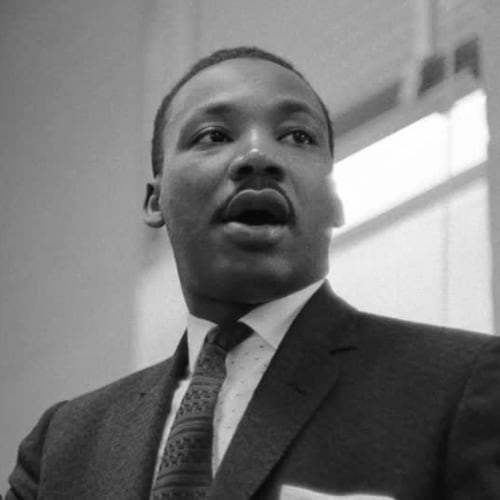Editor’s Note: This story is one in a series of Black History Month stories that explores the role of resistance to oppression in the Black community.
Katie Lynn Conner is excited about everything that goes with her high school prom this year. From dress shopping to posing for photos, experiencing the dance and attending the after parties.
The quintessential rite of passage will be a chance to hang out with all her friends, regardless of their race. What the white 17-year-old junior said she finds weird is that, not too long ago, she couldn’t have done that in Wilcox County.
This spring will mark the 10th anniversary of a push initiated by students in the rural South Georgia county to do what those before hadn’t: have a prom not segregated by race.
To Conner and some of her peers, it’s odd that, before 2013, such intermingling didn’t happen at senior proms, which were privately organized events. To students in 2013, it was unimaginable what kind of global attention would come with their efforts to come together.
“We weren’t trying to change the world, just that little thing in our community,” said Quanesha Wallace, who is Black and was the school’s homecoming queen the year the first integrated prom was held.
Some locals, even now, don’t like how their community was portrayed when national and international media picked up the story. Some were surprised that civil rights groups and strangers from around the world got involved in what were essentially private gatherings in such a small community. But many also say the students’ nudge toward unity back then may have contributed to subtle changes that are still ongoing, particularly among today’s students who can’t even remember another way of doing prom.
Credit: HYOSUB SHIN / AJC
Credit: HYOSUB SHIN / AJC
It all started with idle talk among Black and white classmates. It wasn’t uncommon for all students to hang out together at lunch or even after school. But not every parent was OK with that in 2013, said John West, who was one of the organizers of the integrated prom. A few of his white friends had to hide friendships from their parents, he said.
He was among the dozen or more friends who attended advanced classes together and began talking among themselves about how they might mark their senior year since they wouldn’t all be together at prom. Then someone raised the question: What if they could have a unified prom?
Officials at the time point out that Wilcox County High School, with fewer than 400 students, didn’t put on a prom. It hadn’t, apparently, at least since local schools integrated decades earlier. Instead, senior proms were off-site events organized by students and their parents. One was considered the white prom. Another, the Black one.
Outsiders seemed flabbergasted that segregated proms still existed in the United States in 2013.
The students’ push for unity with the dance sparked uncomfortable questions. Some in the community encouraged the prom changes. Others felt Wilcox was being unfairly cast as racist. Some, both Black and white residents, worried about ramifications for those who had to keep living there after the hoopla was over.
School officials didn’t immediately agree to make any changes.
Undeterred, students put on their own unified prom, relying on money, supplies and services donated by supporters around the nation.
There was a red carpet and an Eiffel tower theme and professional DJs.
“I cried so much,” remembers one of the organizers, Mareshia Rucker, who now lives in Macon. “I was so happy that we just made it happen and that other people were pushing us and wanted us to have a prom just as much as we did.”
Credit: HYOSUB SHIN / AJC
Credit: HYOSUB SHIN / AJC
Soon after the students’ integrated dance, Wilcox high school officials agreed to launch a school-sponsored prom, one everyone could go to. Paid for by student fundraisers and ticket sales, the county’s lone high school held a prom and a homecoming dance the next school year and ever since. Locals and school officials said they believe segregated private proms are no longer being held.
While most local schools in Georgia have had integrated proms for decades, a few made the shift only a few years before Wilcox did.
A two-and-a-half hour drive from downtown Atlanta, Wilcox has fewer than 9,000 residents, and its population has been shrinking for years. About two-thirds of locals are white. Most of the rest are Black. More than one in four people are below the poverty line, double the statewide ratio. The community is heavily dependent on agriculture and a state prison.
“Everybody knows everybody. If you don’t know them, you know their family,” said Conner, the high school junior. “You don’t meet very many strangers in Wilcox.”
Conversations about race are rarely easy, whether in small towns or big cities. Wilcox residents say the history of segregated proms rarely comes up in conversation. Some students or recent graduates have heard little or nothing about how it was.
B.J. Gibson, a 16-year-old Black junior and standout on the football and baseball teams, recently learned more about the segregated proms from his uncle, John West, one of the 2013 graduates who had helped push for change.
“It kind of blew my mind,” said Gibson, who lives in Rochelle, a town of about 1,000 people, where the high school is. He had questions for his uncle about why such a practice lasted so long and why parents didn’t push for it to end sooner.
“That’s just how some people are,” his uncle said.
William Dozier, the manager of a local furniture and appliance store in Abbeville, has served on the county school board for more than 30 years. The whole issue over the prom was blown out of proportion, he said.
“I don’t think there has been or is a real racial issue here,” said Dozier, who is white.
As for the private proms segregated by race, he said, “I didn’t have a problem with it because we didn’t sponsor proms.”
“Nobody apparently had any problems” with them before 2013, Dozier said, because he doesn’t remember anybody pushing for change until then.
But a number of Wilcox’s current and former residents say the separation of high school kids on prom night never felt right.
For some, the tradition seemed oddly out of place for a community where people of different races seemed to get along well. For others, it was an ugly sign of a deeper racist disconnect, fueled not by students but by their parents and grandparents.
Margaret McKinney, a 61-year-old Black retiree who grew up in Rochelle, attended a Black prom when she was a senior in high school. She remembers going with a friend, the music and dancing, finger foods and beautiful attire. But more than 40 years later, she has a regret. She never got a chance to dance with a white kid she had considered her boyfriend in elementary school, shortly after integration. “I would have liked to,” she said.
Credit: HYOSUB SHIN / AJC
Credit: HYOSUB SHIN / AJC
Ashley Gibson, a 28-year-old white woman, said that, during her freshman year in high school, she was shunned by most of her white friends after their parents learned that she was dating a Black classmate. At one point, she said, a pastor called her mom to say the boyfriend wouldn’t be allowed to accompany Ashley on a group church trip. Older members of the church would be upset, he said.
Gibson said many of her friends gradually came around. But race remained an issue for some, she said. During her senior year in 2012, a friend relayed a message to her from that year’s prom organizers: her Black boyfriend would not be allowed at the white prom. Why not, they suggested, bring a white person instead? She remembers crying when she got home.
Gibson continued to date her boyfriend and eventually married him. She now lives in metro Atlanta and said she still loves her hometown. She felt like everyone at the schools there welcomed and loved her young mixed-race daughter when they lived there.
Many people in Wilcox haven’t spent much time far from their hometowns, Gibson said. “A lot of people would be very upset if you told them something they did was racist. I think it is because they generally don’t know and understand that they are. I think it takes a lot of self awareness.”
Close friendships between white and Black students at the high school are common.
They were in 2013, too. But, even as the unified prom was being planned, a private prom was held.
“We were very open to inviting anybody who wanted to come,” said Wesley Helms, a white underclassman who helped with that event. Helms specifically asked some of his Black friends to attend.
Kameon Peavy was one of them. “Wesley is a great person. He is not a racist at all,” said Peavy, who is now a realtor and entrepreneur in metro Atlanta.
But Peavy didn’t attend. He said he knew the community’s history and understood what the event was, even if it wasn’t marketed as a “white” prom.
“Not everybody there is racist, but the event is, if that makes sense,” Peavy said.
Of about 50 people who showed up, all were white, Helms said.
Helms, who also attended the unified prom a week later, said “looking back I wish I would have made a more conscious effort to get everyone involved” in the prom he helped with. He said he’s glad there was a change to a single prom, held by the school and embraced by students regardless of race.
Organizers of the unified prom said early on they had trouble convincing school officials to act and they only saw movement once big media outlets covered the issue.
Wallace, the former homecoming queen, said her parents convinced her to step back from helping with the unified prom after they grew worried about rising tensions, particularly after her father endured heated words from some people.
Stephanie Sinnott, an organizer who is white, remembers someone posting a picture of her online with a racist label. Some of the ugliness, she suspected, came from outsiders. But she said she couldn’t fathom how some locals would defend segregated proms as merely “tradition” or suggest that split proms were better because Black students and white students liked different kinds of music. As if everyone’s musical tastes worked in lockstep with their skin pigment or that tunes would be more important than people sharing an iconic event together, she said.
Toni Rucker, whose daughter Mareshia was one of the most vocal of the prom organizers, said she would get calls from other people in the community, for and against the changes. What surprised her, she said, is that some fellow Black people said to leave things as they had always been.
Credit: HYOSUB SHIN / AJC
Credit: HYOSUB SHIN / AJC
Change still appears to be underway in Wilcox.
Interracial dating is common now in the high school and community, several locals say. In Rochelle, as in many places, there is still what some consider a white side of town and a Black side of town, that’s literally across the railroad tracks. But in recent years, more Black people have moved to the white side, by some accounts.
Whispers of hard feelings from 2013 remain. The Ruckers said some locals they were friendly with before now act as if they don’t see them. Toni Rucker recently concluded that she should be the one to reach out to those people, who may mistakenly think that she has feelings against them.
Caleb Cook, a 2013 graduate and white farmer who also serves as a children’s pastor, said he thinks the change to an integrated school prom is great. But he doesn’t like how it came about, with the community unnecessarily tarnished in the process and individuals being seen as racist based on where they dance. “I would say it broke a lot of friendships.”
Former classmates wonder if the tensions will make it difficult to organize a 10-year high school reunion this year. Mareshia Rucker said she may attempt to again make the Class of 2013 whole.
“It would be nice to get back together and see everyone,” she said.
This year, the AJC’s Black History Month series will focus on the role of resistance to forms of oppression in the Black community. In addition to the traditional stories that we do on African American pioneers, these pieces will run in our Living and A sections every day this month. You can also go to ajc.com/black-history-month for more subscriber exclusives on the African American people, places and organizations that have changed the world.
About the Author
The Latest
Featured






